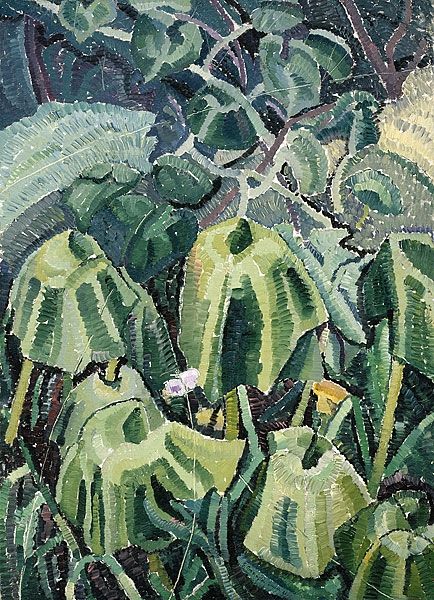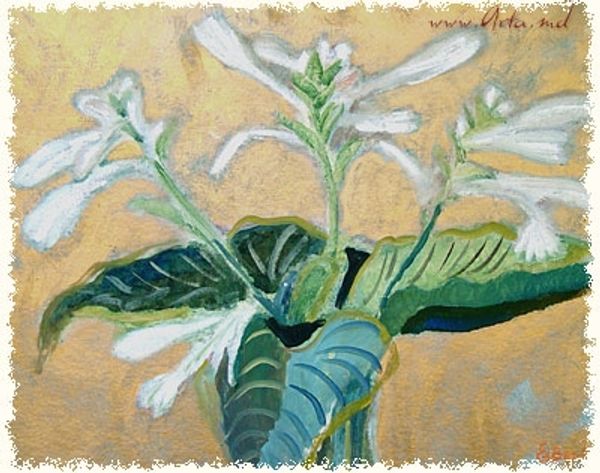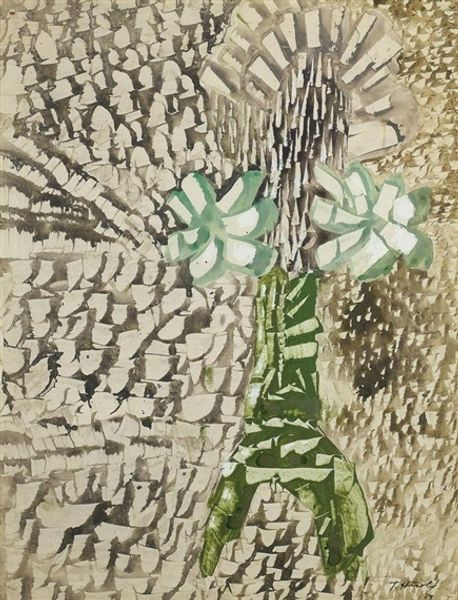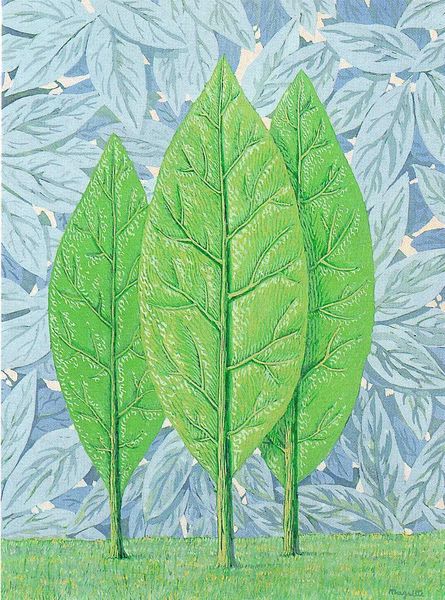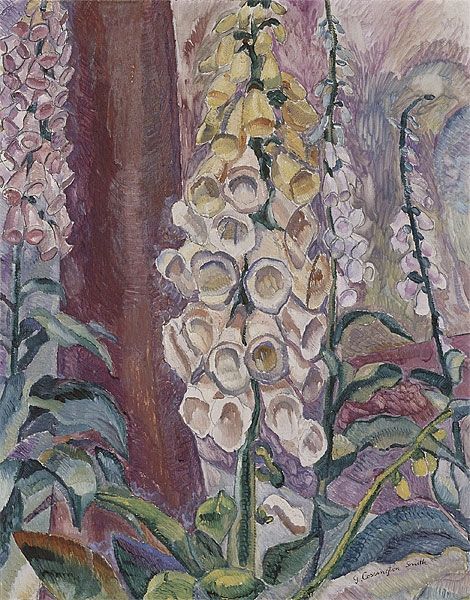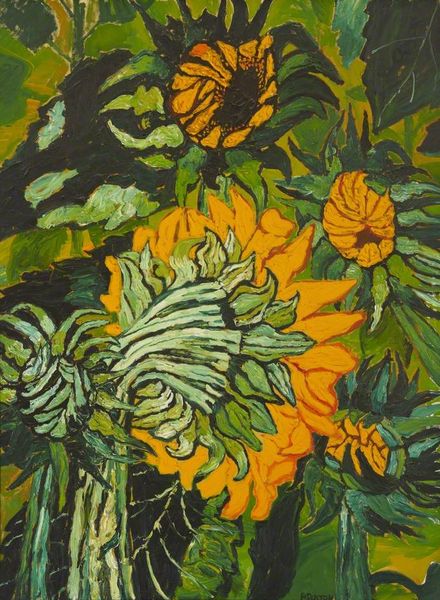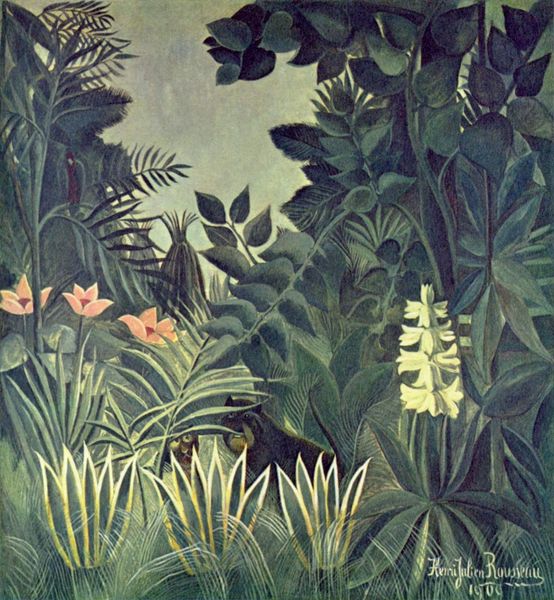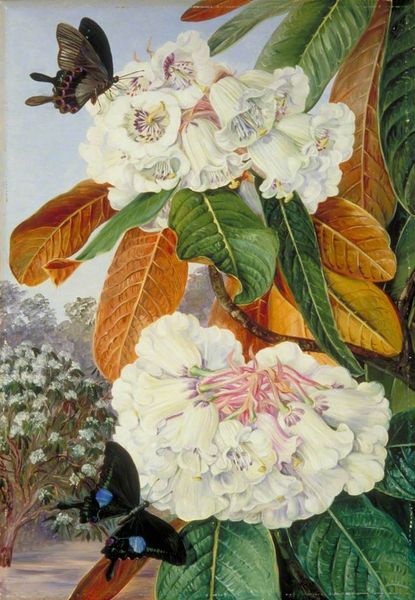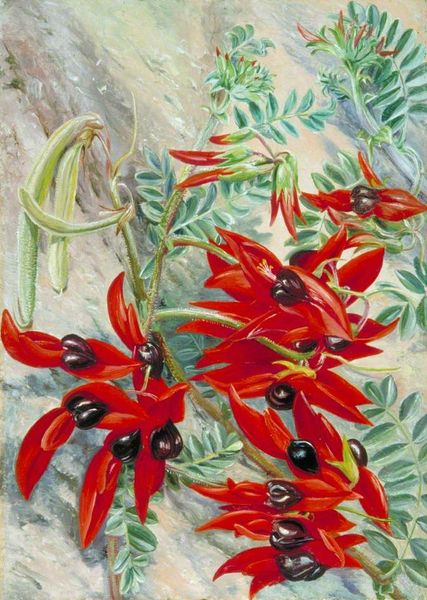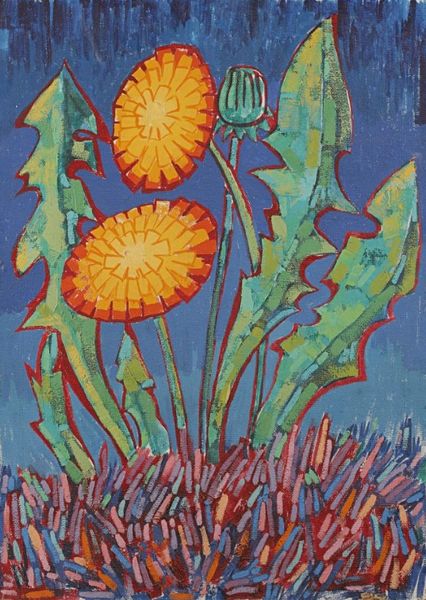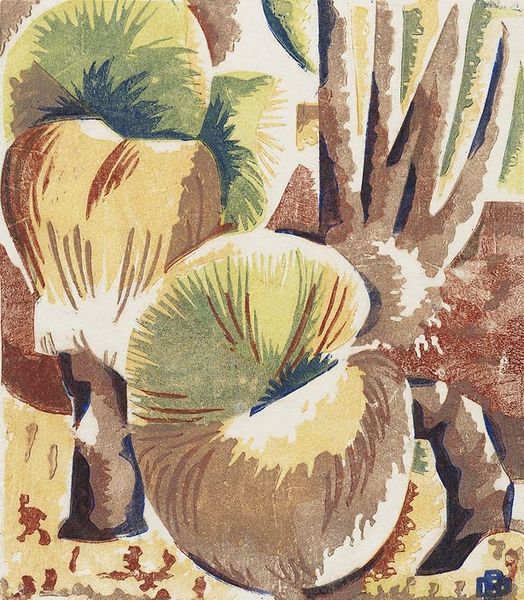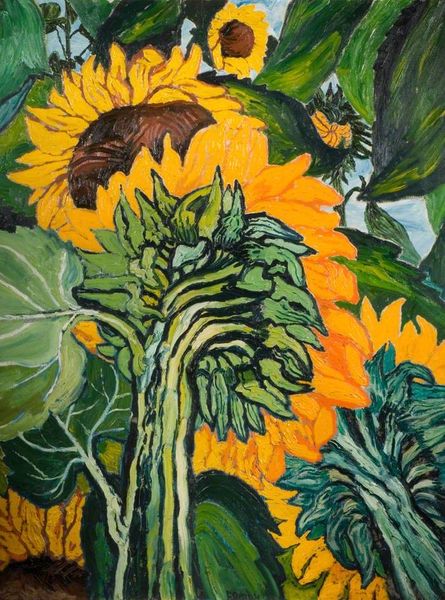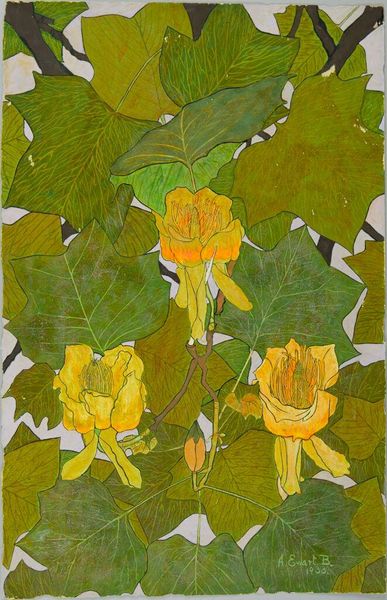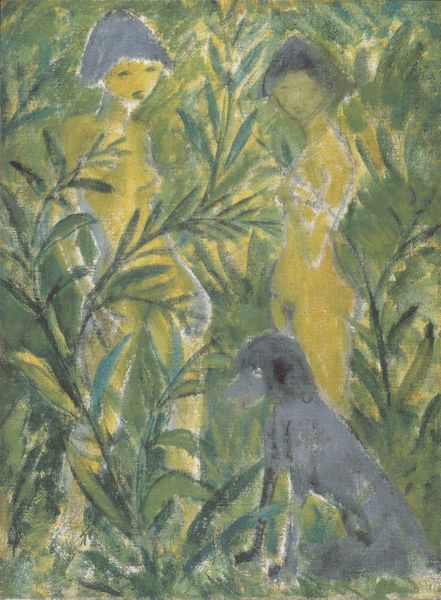
Copyright: Grace Cossington Smith,Fair Use
Editor: Here we have Grace Cossington Smith’s "Lily growing in a field by the sea," an oil painting from 1927. The brushstrokes are so distinct, almost mosaic-like, and it creates such a bright and airy atmosphere. What do you see in this piece, beyond the obvious floral subject? Curator: I see the echo of ritual and renewal. Lilies, throughout history, have been heavily symbolic, often connected to concepts of purity, resurrection, and hope. Notice how Smith elevates this single lily, placing it almost as a beacon against the landscape. Editor: It’s interesting you say 'beacon' because the positioning almost suggests that it's more important than the field it is growing in! It looms tall above the ground. Curator: Exactly. The bold brushstrokes, while impressionistic, lend a certain weight to the image. This isn’t merely a pleasant scene; it's a statement. In the interwar period, nature, often featuring a sole entity, frequently symbolized the rebuilding and resilience of spirit following the devastation. Consider the almost tangible, textural quality of the paint; does that evoke any specific emotional response in you? Editor: Definitely, there's a sense of hopeful persistence, but also a kind of fragile beauty, given the delicacy that the artist imbued on its petals, in spite of using those thick brushstrokes. So you’re suggesting the lily functions almost as a visual reminder? Curator: Precisely. Cossington Smith is inviting us to connect with a long lineage of symbolic meaning and consider the quiet power of nature to endure and inspire even after tumultuous times. Editor: I hadn’t considered the deeper symbolic context before, I was very focused on the style and technique of the painting. It gives you a lot to think about. Curator: And hopefully, helps you see the piece in a new light! It serves as a great reminder that sometimes, even the simplest images can carry profound cultural weight.
Comments
No comments
Be the first to comment and join the conversation on the ultimate creative platform.
